|
By Ethan Farr, Sports Myotherapist & Exercise Scientist Plantar Fasciitis is a condition that has piqued my interest as I have also suffered from it and since I have had it I have grown a passion in treating it and fighting it off for good. But what is Plantar Fasciitis? Plantar Fasciitis is a musculoskeletal disorder characterised by heel pain that is exacerbated by weight-bearing activity and after extended periods of rest or sedentary behaviour - but what does this mean in english? Fundamentally Plantar Fasciitis is a long term (comes up repeatedly over a few months) pain at the bottom of the foot this can be heel or arch of the foot. It is worse after sitting or lying down, and it is most commonly felt first thing in the morning when you get up from bed but can be brought on after long periods of walking or standing.
Studies have shown that Plantar Fasciitis affects 10% of adults in their lifetime and is most common in individuals between the ages of 40 and 60 years old, but can affect a younger population of habitual runners or those that are just highly active. Where does it come from/ how do you get it? Plantar Fasciitis is multifactorial but has commonly been linked with; High impact exercise; Obesity; prolonged standing/sitting; flat feet; occupational use of equipment like heavy safety boots; and is highly prevalent in runners. Common practice for the treatment of Plantar Fasciitis includes stretching and exercises for the muscles around the ankle and sole of the foot, as well as using orthotics for the shoes you wear, and potentially using a glucocorticoid injection (Ouch). Did you know that there is another treatment option focusing on pain management making it much easier to do everything you need to do day to day without that constant ache in the feet nagging at you - but what is this miracle cure? Say hello to myofascial dry needling or MDN for short, MDN is a technique used by myotherapists and other healthcare professionals to treat myofascial pain and muscle tightness. It involves inserting acupuncture needles into trigger points (or “knots”) in a muscle to stimulate a healing response and release tension. Not to be confused with acupuncture, which is based on traditional Chinese medicine and focuses on balancing energy flow, MDN targets muscular issues directly, aiming to alleviate pain, improve range of motion, and promote healing. Many studies have supported the notion that MDN can be used in the treatment of Plantar Fasciitis and some studies have found that the use of MDN on the gastrocnemius and soleus (muscles in the calves) had a statistically significant (≥95% of participants experienced improvement) reduction in plantar fascial pain moderate (2 weeks post treatment) to long term (4 weeks post treatment) for most subjects. What does this mean for you? With reduced pain you are able to do the exercise needed to help strengthen and support your ankle and heel meaning if you take an active role post treatment your Plantar Fasciitis may not come back. For others who may not be capable to be more active in their recovery the ability to be pain free for up to 4 weeks is enough and they can seek regular maintenance treatments monthly or bimonthly to control pain. Ready to take the first step towards relief from Plantar Fasciitis? Book your session at Simple Wellness Myotherapy today and experience the transformative benefits of myofascial dry needling. Take charge of your recovery and bid farewell to foot pain for good! Myotherapists train extensively in a technique called Dry Needling. Dry needling is a therapeutic technique that has gained popularity in recent years as a powerful tool for relieving musculoskeletal pain, restoring mobility and promoting overall wellness. Its an advanced treatment technique that involves inserting very thin, sterile needles into specific muscles in the body to induce a rapid change in muscle tension. Often the target of dry needling is a trigger point within a muscle. These trigger points are tight bands within the muscle tissue that can cause pain, discomfort, and limited range of motion when they become overly contracted or dysfunctional. The primary goal of dry needling is to alter the muscle tension and promote the natural healing processes of the body. Often this technique can elicit a twitch response from the muscle, causing it to contract and then relax, which is felt as a sudden, involuntary muscle twitch. This contraction and relaxation help to release tension and improve blood flow to the area, which can accelerate the healing process. Its usually not painful, but can be surprising to patients. Some practitioners will use a more stimulating technique to specifically seek out the twitch response which can be highly beneficial, especially for patients who have extreme tightness and pain. For patients who don’t feel comfortable with a very stimulating approach, a gentler technique of positioning and resting needles can also be used with good effect. The type of techniques used really depends on the patient and how their body responds - we see many patients whose bodies are very sensitive to needling and get amazing results from very low stimulation; and we also see many patients who prefer to really “feel it” by experiencing significant twitch responses. Theres no right or wrong way to do it, its always tailored to the individual being treated.
Dry needling can be particularly effective in treating a wide range of musculoskeletal conditions, including chronic pain, muscle stiffness, joint pain, and even some neurological conditions. It is commonly used to address issues such as neck pain, back pain, shoulder pain, and headaches, among others. Athletes and sports players tend to get very good results from dry needling. A gentler approach to dry needling can also be really effective in situations where the pain is so severe that its not tolerable to apply pressure using other myotherapy techniques like massage or joint mobilisation. One of the key advantages of dry needling is its minimally invasive nature. The needles used in this technique are extremely thin, and patients typically experience minimal discomfort during the procedure. Often a pin prick sensation is felt as the needle punctures the skin, and then patients are surprised by how minimal the discomfort of the treatment is. Many patients report immediate relief and improved mobility after a session. Like with any technique where skin is being punctured, there are risks associated with dry needling. Our consent form for treatment provides information on the risks, including things like small bleeds, post needling soreness, and pneumothorax. Its important to know that while risks like pneumothorax (punctured lung) are serious, when you receive dry needling from a qualified therapist the risk is very low due to the extent of the practitioners training and experience. Because of these risks, dry needling should only be performed by trained and qualified practitioners. Our clinic only allows Myotherapists to provide dry needling, because dry needling is included as core curriculum in all Myotherapy training programs. This means your myotherapist has had to study for 6+ months under close supervision and pass exams in order to become qualified. There are short course 2-3 day programs available for therapists to become registered to provide dry needling, which is why you may find remedial massage therapists, physiotherapists, chiropractors and osteopaths who offer dry needling. These practitioners only get a very short amount of time to learn and practice in their weekend course before they begin offering dry needling to patients. Want to give dry needling a go? Book online and make sure to pick one of our 5 Myotherapists as your practitioner. By Rachael Bird, Myotherapist Myotherapy is a type of physical therapy that focuses on the assessment, treatment, and management of musculoskeletal pain and dysfunction. This means your favourite Myotherapist primarily targets soft tissues, such as muscles, tendons, ligaments, and fascia, to alleviate your pain and improve overall function. We have a variety of advanced techniques that can be used to calm down painful areas, reduce strain on injured muscles and joints, activate weak muscles and rebuild strength and stability. Our treatments include hands on massage and myofascial techniques; dry needling; cupping; MET (muscle energy technique); joint mobilisations; stretching; taping; prescribing exercises to restore muscle balance and strength; providing education and home care advice on how to give your body the best opportunity at recovering. Myotherapists are goal oriented healthcare professionals - that means that we carefully plan our treatment for your pain based on the outcomes we want to help you achieve. We can help you in the following way
Pain Reduction:
If you've ever had that one-sided sharp, catching pain in your neck or back that stops you moving even slightly towards that painful side, you've likely experienced a sprained facet joint. Facet joint sprains can be a source of intense back or neck pain, limiting our mobility and overall quality of life. This kind of injury is usually fairly short lived, but the first few days when its at its worst can be very highly sensitive and irritable. The acute phase usually doesn't last more than a week, and the pain usually subsides entirely within 2-3 weeks. These injuries can result from trauma (like a car accident), repetitive motions or rapid combination movements (like bending/twisting/lifting too quickly), or can be predisposed in degenerative conditions where the joint has been previously injured or where the joint isn't as healthy as it could be. Even though this condition is normally short-lived, it can be challenging to manage and exceptionally painful. Facet joints are small joints located at the back of the spine, connecting the vertebrae. When they are happy they provide stability and allow for easy non-painful movement in the spine. When these joints become injured or strained, it can be a very painful experience. Turning your head to the impacted side is usually very restricted by a sharp, bony pain. Often turning to the opposite side is much easier and without the same sting of instant pain.
Common causes include sudden trauma or whiplash type injuries, quick repetitive motions, or lifting and twisting at the same time. We'll often hear people say "I slept funny and now I can't turn my neck that way", this can be from sleeping in a weird or awkward position with the neck jammed up overnight. Symptoms of facet joint sprains include localised pain which is usually one sided, stiffness, reduced range of motion due to intense pain, and muscle spasms. The muscles around the impacted facet joint can go into a protective spasm to prevent you from moving, but the spasm itself can be very painful and can cause referral of pain to other areas. If the sprained facet joint is in your neck, its common to get a headache referred from the surrounding muscles. If the sprained facet is in your back, the referral patterns from an upper back facet is usually to the shoulders, or from a lower back facet to your hips. These sprains can significantly impact daily activities, especially things that need you to be able to move easily and safely, like doing headchecks in the car, getting in and out of bed, or going to the gym. When it comes to facet joint sprains, our myotherapists offer several benefits: Pain Relief: Myotherapists utilise a range of techniques, including deep tissue massage, trigger point therapy, and joint mobilisation, to alleviate pain associated with facet joint sprains. By targeting the affected area and surrounding muscles, our myotherapists help reduce muscle tension, release endorphins, and improve blood circulation, resulting in pain relief. Techniques that can be used in acute stages include things like dry needling which can resolve muscle spasm without applying broad pressure over the area. Muscle Relaxation and Joint Mobility: Facet joint sprains often lead to muscle spasms and restricted joint mobility. Myotherapy techniques such as gentle stretching, soft tissue mobilisation, and joint mobilisation help relax the muscles, increase flexibility, and restore normal joint motion. These interventions promote healing, reduce inflammation, and enhance overall range of motion. Gentle mobilisations encourage the correct glide of the facet joints to return, and using techniques like Muscle Energy Technique we can often reduce the protective spasm and improve the amount of movement and the irritability of the joint fairly quickly. Muscle Imbalance: Musculoskeletal imbalances can contribute to facet joint sprains. Myotherapists assess and correct muscle imbalances through targeted exercises, ergonomic modifications, and postural retraining. By addressing these underlying issues, your myotherapist helps improve your alignment, reduce stress on the facet joints, and prevent further injury. Strength and Stability: Myotherapy focuses not only on treating the immediate pain but also on building strength and stability to prevent future sprains, once the pain intensity allows us to do so. Myotherapists develop customised exercise programs to strengthen the muscles supporting the spine, enhancing overall spinal stability and reducing the risk of recurrent facet joint sprains. For a facet joint sprain, we usually expect this part of your treatment plan to begin about 2 weeks into your program, once the pain has settled and you have regained mobility. Education and Self-Care: Myotherapists play an essential role in educating our patients about facet joint sprains and self-care techniques. We provide guidance on proper body mechanics, ergonomics, and exercises to maintain a healthy spine and prevent further injuries. Empowering individuals with the knowledge to take control of their own well-being is a fundamental aspect of myotherapy. Facet joint sprains can significantly impact our daily lives, causing pain and limiting our mobility. Myotherapy offers a comprehensive approach to treating facet joint sprains by addressing pain, muscle tension, joint mobility, and underlying imbalances. Through techniques such as pain relief, muscle relaxation, joint movement correction, and strength training, myotherapy aims to provide lasting relief and prevent future sprains. If you're struggling with facet joint sprains, seeking the expertise of our qualified myotherapists can be a valuable step towards finding relief and regaining functionality. Book online with any of our great Myos, or call us on 03 8204 0970 for more information. Knee injuries are common among athletes, active individuals, and even those who lead a sedentary lifestyle. These injuries can range from mild sprains to severe tears, and can cause significant pain, swelling, and discomfort. In this blog, we'll explore the ways in which Myotherapy and specific dry needling techniques can help treat knee injuries and reduce pain. Myotherapists have a wide variety of treatment techniques and tools that help relieve knee pain.
Massage therapy is an effective way to treat knee injuries because it helps to improve circulation and reduce swelling. When you receive a massage, the therapist uses various techniques to manipulate the muscles and tissues surrounding the knee. This increased blood flow helps to reduce inflammation and speed up the healing process. Furthermore, massage therapy can help to break down scar tissue, which can cause pain and limit range of motion. By breaking down this tissue, massage therapy can help to improve flexibility and prevent future injuries. Our myotherapists consider all the surrounding muscles of the knee, as well as investigating other nearby areas like ankle and hip pain and mobility, and the strength of your glutes and lower back. In addition to reducing pain, massage therapy can also help to improve range of motion in the knee. Tight muscles can limit your ability to move your knee freely, which can cause pain and discomfort. Massage therapy helps to release tension in these muscles, which can improve mobility and reduce pain. Another treatment option our myotherapists are highly skilled in using for knee injuries is dry needling. Dry needling is a form of therapy that involves the insertion of fine, sterile needles into the muscles. This process helps to stimulate the healing process and reduce pain by releasing tension in the muscles. Dry needling can be especially effective for knee injuries because it helps to improve circulation, reduce inflammation, and break down scar tissue. Additionally, dry needling can help to release endorphins, which are the body's natural painkillers. This can help to reduce pain and improve overall well-being. Another benefit of dry needling is that it can help to improve strength and stability in the knee joint. When you receive dry needling, the therapist targets specific points in the muscles that are causing pain and discomfort. By improving the strength and stability of these muscles, dry needling can help to reduce the risk of future knee injuries. Furthermore, dry needling can help to improve range of motion, which is important for reducing pain and promoting healing. Studies have demonstrated dry needling to be an effective and safe treatment option for knee osteoarthritis. By targeting specific locations around the knee, dry needling can effectively aid in reducing pain sensitivity and allow for more freedom of movement. Electrostimulation of the needles has also been shown to have a beneficial effect on cartilage regeneration, and in reducing the need for medications. We know that knee injuries can be painful and debilitating, but massage therapy and dry needling can help to reduce pain and improve mobility. Whether you're recovering from a knee injury or dealing with chronic knee pain from conditions like osteoarthritis, these therapies can help to improve your overall well-being. By combining massage therapy and dry needling, you can help to reduce pain, improve circulation, and promote healing. So, if you're suffering from knee pain, our team is here to help. Book your first appointment to get your treatment plan started today. With regular therapy, you can help to reduce pain, improve mobility, and enjoy a more active and pain-free life. Improving circulation is an important factor in helping sore, tight, and tired muscles recover faster. This is because good blood flow is essential for delivering oxygen, nutrients, and hormones to the muscles and removing waste products. When circulation is poor, it can cause muscle tension, fatigue, and pain, leading to slower recovery and reduced performance. Think of circulation and blood flow as the way that your muscles breathe. Circulation is also essential for activating the immune system, which helps repair damaged tissues and reduce inflammation. When the immune system is working efficiently, it can more easily break down lactic acid and other waste products that build up in the muscles during exercise, reducing muscle soreness and stiffness.
There are a number of ways to improve circulation and support muscle recovery. One of the most effective is to engage in regular exercise, such as cardio or strength training, which can help increase blood flow and improve overall cardiovascular health. Stretching and foam rolling can also help improve circulation by loosening tight muscles and promoting blood flow. As Myotherapists and Remedial Massage Therapists, we have a wide range of circulation boosting tools at our disposal.
Heat therapy, such as using a hot bath or heating pad, can also be beneficial for improving circulation and reducing muscle pain. Heat increases blood flow to the affected area, which can help relieve tightness and reduce inflammation. Finally, proper nutrition is important for supporting circulation and muscle recovery. Eating a healthy, balanced diet rich in nutrients like vitamins C and E, magnesium, and omega-3 fatty acids can help improve circulation, reduce inflammation, and support overall health. Our therapists are not able to give customised nutritional advice, but we always suggest maintaining good hydration, eating a diet full of colourful fruits and veggies, and ensuring you get enough protein - whether thats animal or plant based, we're not here to judge! In conclusion, improving circulation is a crucial aspect of supporting muscle recovery and reducing muscle pain and fatigue. Incorporating activities like exercise, stretching, massage, heat therapy, and proper nutrition into your routine can help improve circulation and speed up the healing process. Want help from our therapists? Book a time to have a treatment with us. We're excited to welcome our newest Remedial Massage Therapist, Peter Pascalis, to the team! Peter has been a Remedial Massage Therapist for over 10 years, and in his time as a therapist he's worked in a variety of clinical and sport team settings, including 8 seasons with Dingley Footy Club.
He's also studied for his Bachelor degree in Myotherapy at Endeavour College of Natural Health. He has just completed the very last components of this 3 year degree this month, meaning once his paperwork comes through he will officially be a Myotherapist! Peter impressed us with his knowledge and skills in assessment and treatment of pain and sport injuries. He has a great deep tissue massage style for hands on pain relief, and is excellent with his use of cupping and dry needling to get quick changes to painful and tight areas. He also brings a great wealth of home care exercise ideas, and we all know that the work you do at home is really where the magic happens in your recovery! You'll find appointments with Peter available on Mondays and Wednesdays 12.30pm-7pm, Thursdays 3pm-7pm and Saturdays 9am-1pm, starting from today! Book a time with him and let us know what you think of our new recruit! By Duke Autret Many, if not most people will have heard of, or may even have experienced sciatic pain or sciatica, but what is it exactly? Let’s explore. Sciatica is a term that gets thrown around alot but the fact is that it’s quite a vague term which is used simply to describe any condition where the symptoms involve pain running from the lower back down either one or both legs (potentially all the way down to the foot). Pain types can be sharp, shocking, tingly, numb, cause pins and needles, or cause pinching or catching sensations on movements. 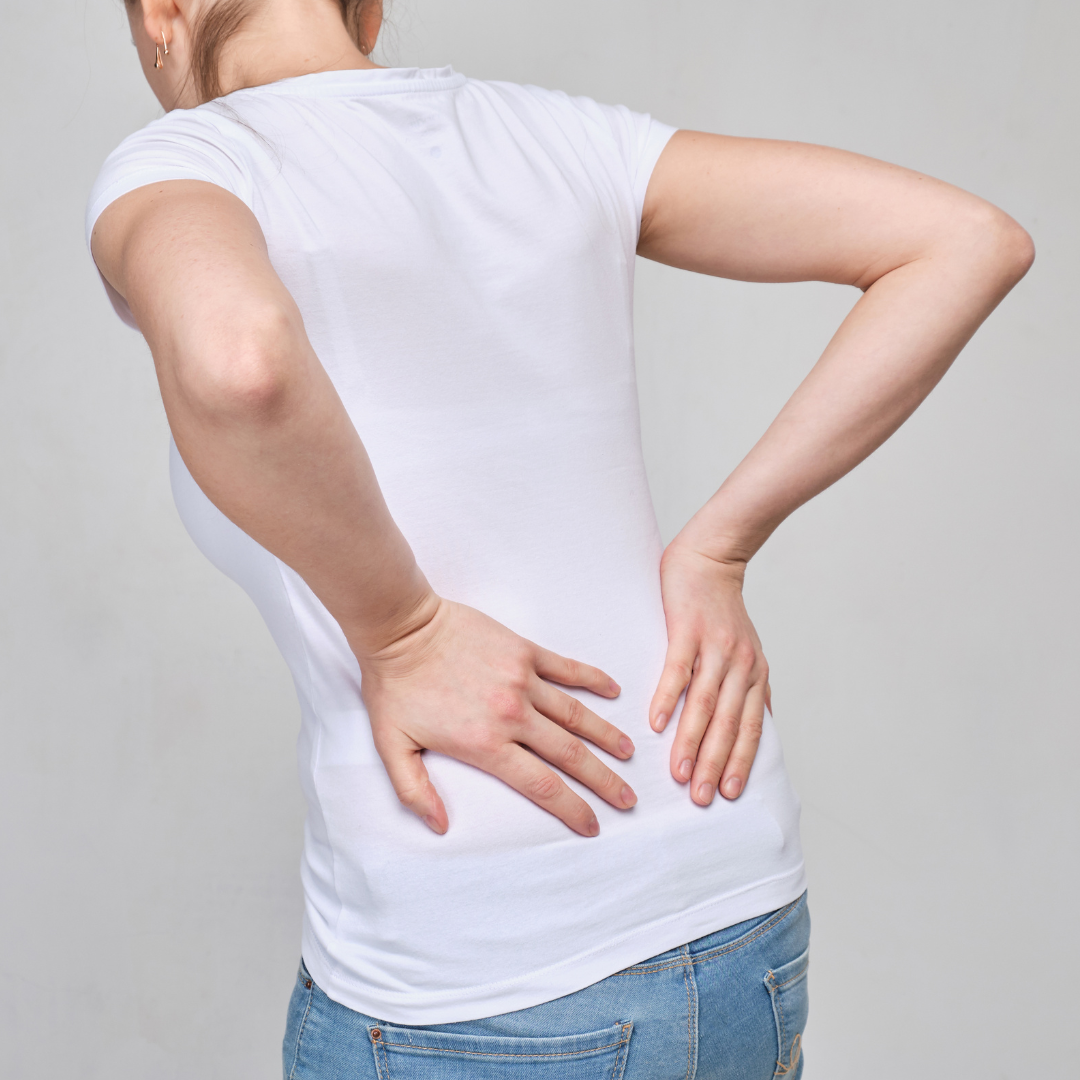 So in fact Sciatica describes not one single condition, but rather a set of symptoms, and that these symptoms that we call Sciatica can be the result of a number of different mechanisms or conditions. To be more precise, Sciatic refers to the name of the nerves which branch out from origins in the lower spine/back and then splits into two Sciatic nerves - one for each leg, and thus innervates the muscles and structures of the legs. However this nerve can become vulnerable to irritation by pressure bearing on it from other structures, when this happens the experience is Sciatica! As mentioned before there can be a variety of reasons for this impingement on the Sciatic nerves and some examples can include pressure from a tight Piriformis muscle (which the sciatic nerve passes directly through or beneath), pressure from an Intervertebral Disc bulge/herniation of the lumbar spine (lower back), Stenosis which is the narrowing of the spinal canal, Spondylolisthesis which is the slipping of one vertebrae over the next and that can pinch the sciatic nerve, or Spondylosis, an arthritic joint degeneration at the lumbar vertebrae which may cause inflammation and subsequent pressure and irritation from that. As we can see, there are many ways in which the sciatic nerve can become impacted and the end result is the same experience and symptoms we call ‘Sciatica’. Some of these situations sound scary, but the majority of the time it is easy to get the pain under control while working with an experienced Myotherapist who can help guide you or refer you on if your condition is particularly acute or severe. Since the irritation that occurs to the Sciatic nerve is to do with some or other kind of pressure, then the priority for treatment becomes to create more space for the nerve to be free, as nerves also need to be able to slide and move with the rest of the body. Importantly, the treatment we use will be dependent on which of the various mechanisms are at play, but commonly any technique employed will be with the aim of creating more space for that nerve, and most often will involves treating the muscles of the lower back, pelvis, hips, glutes and back of the thighs and maybe even calves. Some of these techniques can include hands on options like remedial massage and myofascial release, or helpful nerve gliding movements that can help reduce the sensitivity of those nerves. And in situations where the symptoms are very acute, fresh and severe often Myofascial Dry Needling is a go-to in order to take the edge off and tone everything right down without adding any more undue pressure to the nerve/system. Myotherapists can also provide joint mobilisations to aid in better mobility of the lower back and hips. Mobilisations vary from manipulations - we won't be "cracking your bones", but gently encouraging rhythmic movement to return to your joints without any high velocity cracks or crunches. From here we would look at tailored exercises for your situation which could simply be stretches for a few key tight muscles to a full program to help build stability around the spine and support the structure for healthy nerve function. Some common exercises you might try could be deep abdominal work, diaphragm ‘weight-lifting’, the sphinx, Piriformis stretches, and Glute and Adductor strengthening. Our practitioners will demonstrate these types of exercises and how to safely do them while you're experiencing sciatica, and we can assist you in progressing them as preventative care exercises once the intensity of your pain has eased. If you or anyone you know is currently suffering with Sciatic pain, please come and see us, we are here to help. Just call or leave a message with us at the Simple Wellness Myotherapy clinic here in Rowville, or alternatively you can see our booking schedule and make an appointment yourself for a time that best suits.
Like a proud mama bear, I am so pleased to congratulate Duke on his graduation from RMIT with his Advanced Diploma of Myotherapy! If you've already had a treatment with Duke, you'll know that he is pretty top notch! His knowledge of body mechanics and movement are exceptional, and he's wasted no time in putting new advanced skills into practice while he's been studying his Advanced Diploma over the last year or so.
He is also our go-to recommendation for anyone who loves a firm deep tissue massage - Duke is strong, and knows how to get the best angles to apply that intense level of firm pressure for those who need it. So what will change now that he's graduated and earned his Myotherapist title? To be honest, not a lot, because he has been integrating his knowledge as he goes. What we do hope will change is his availability!! Now that he's no longer spending time studying, we hope to be able to offer more appointments with him in the near future! He is now qualified and insured to offer Dry Needling treatments - however, we know there is a bit of a misconception where a lot of peoples understanding of Myotherapy is that its simply "a massage with added needles", but this is not the case! Not all Myotherapists choose dry needling as a go-to treatment option, and in our clinic we often try for less invasive techniques before using needles. For people who already know their body responds well to needles, it can be a fantastic tool to get quick changes in the muscles, but don't be put off from booking with a Myotherapist if you are scared of needles. Needles are just one tool in our very broad tool kit! Congratulations again, Duke, on persevering with your studies throughout the pandemic. We know that its been hard for students to maintain their focus and commitment especially to very hands on courses like Myotherapy when there have been so many campus closures and restrictions around being able to complete classes and student clinics. |
Meet Our Team
We have a team of great practitioners available 7 days a week at our Rowville clinic. Archives
July 2024
Categories
All
|
Got a question about Myotherapy?
Contact Mel by phone, email or Facebook
|
Simple Wellness Myotherapy & Remedial Massage Clinic
Shop 12B 150 Kelletts Rd Rowville VIC 3178 |
Phone us on
03 8204 0970 |


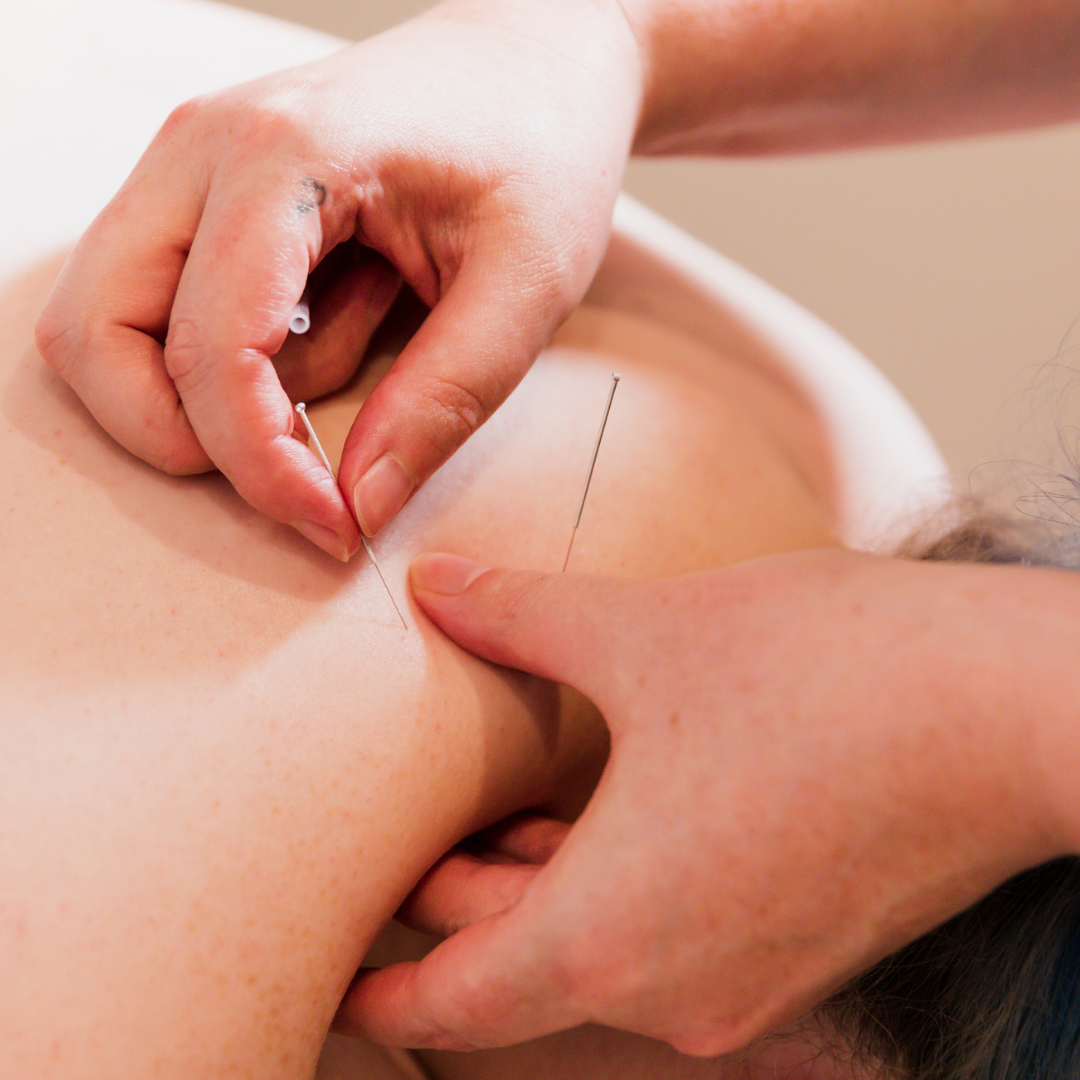
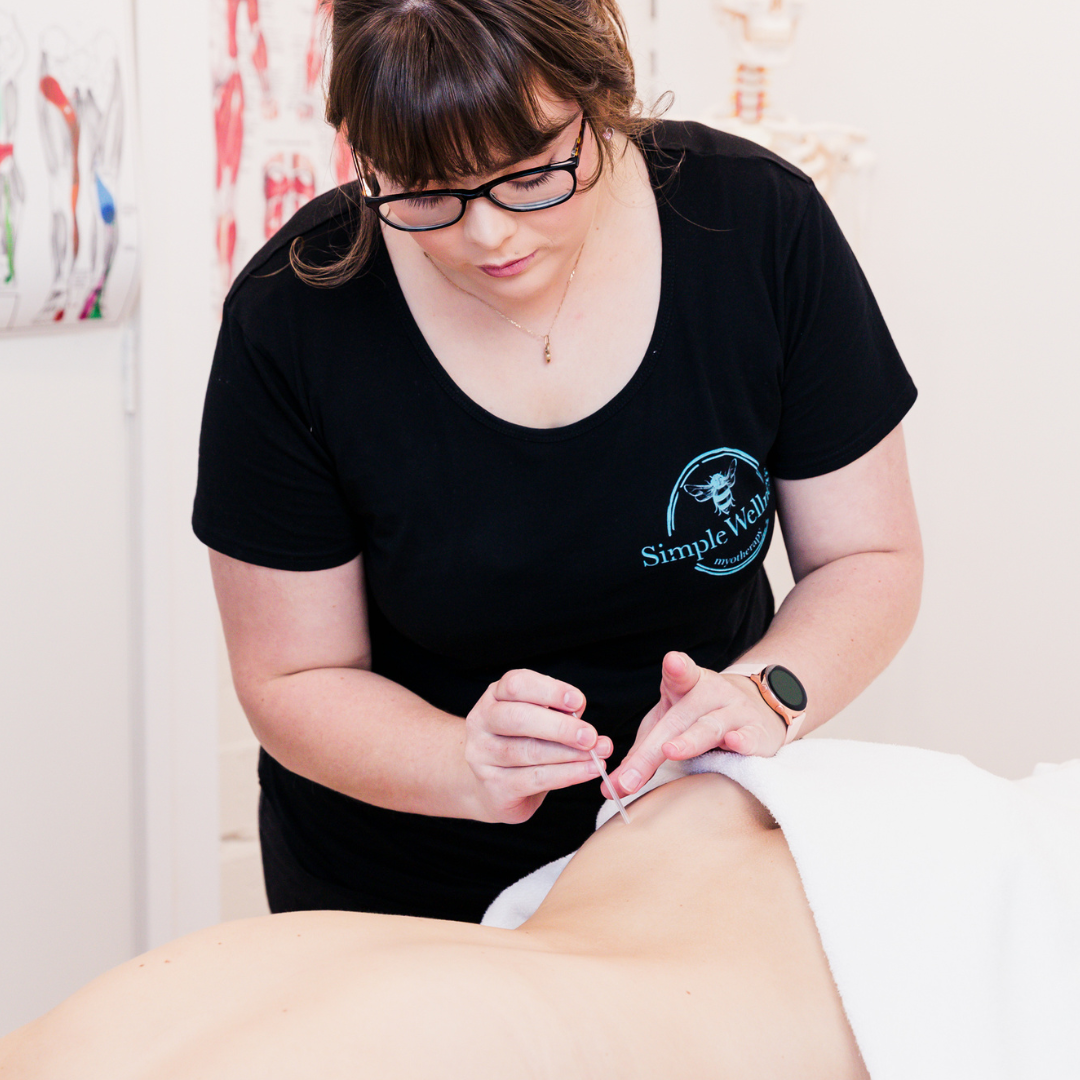
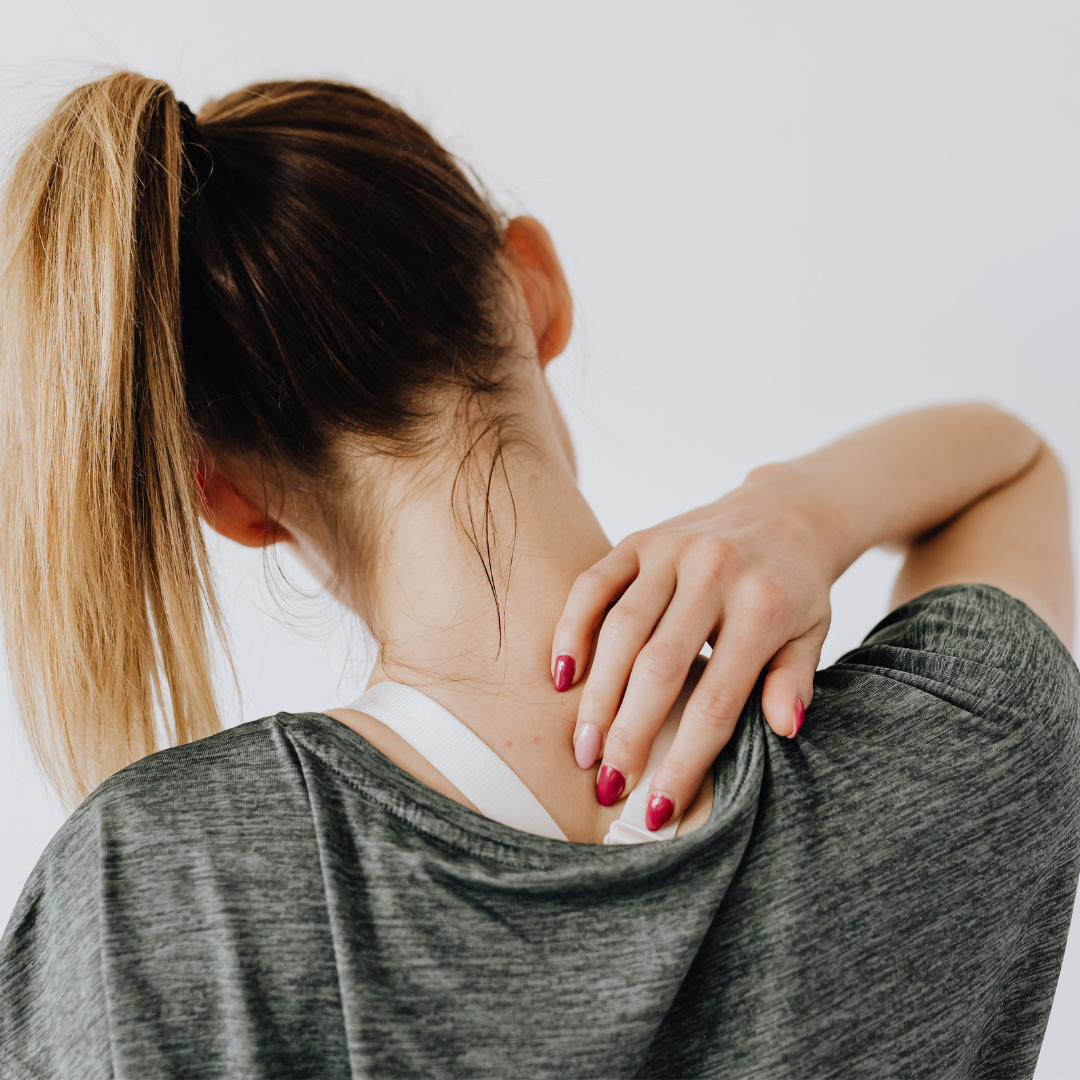
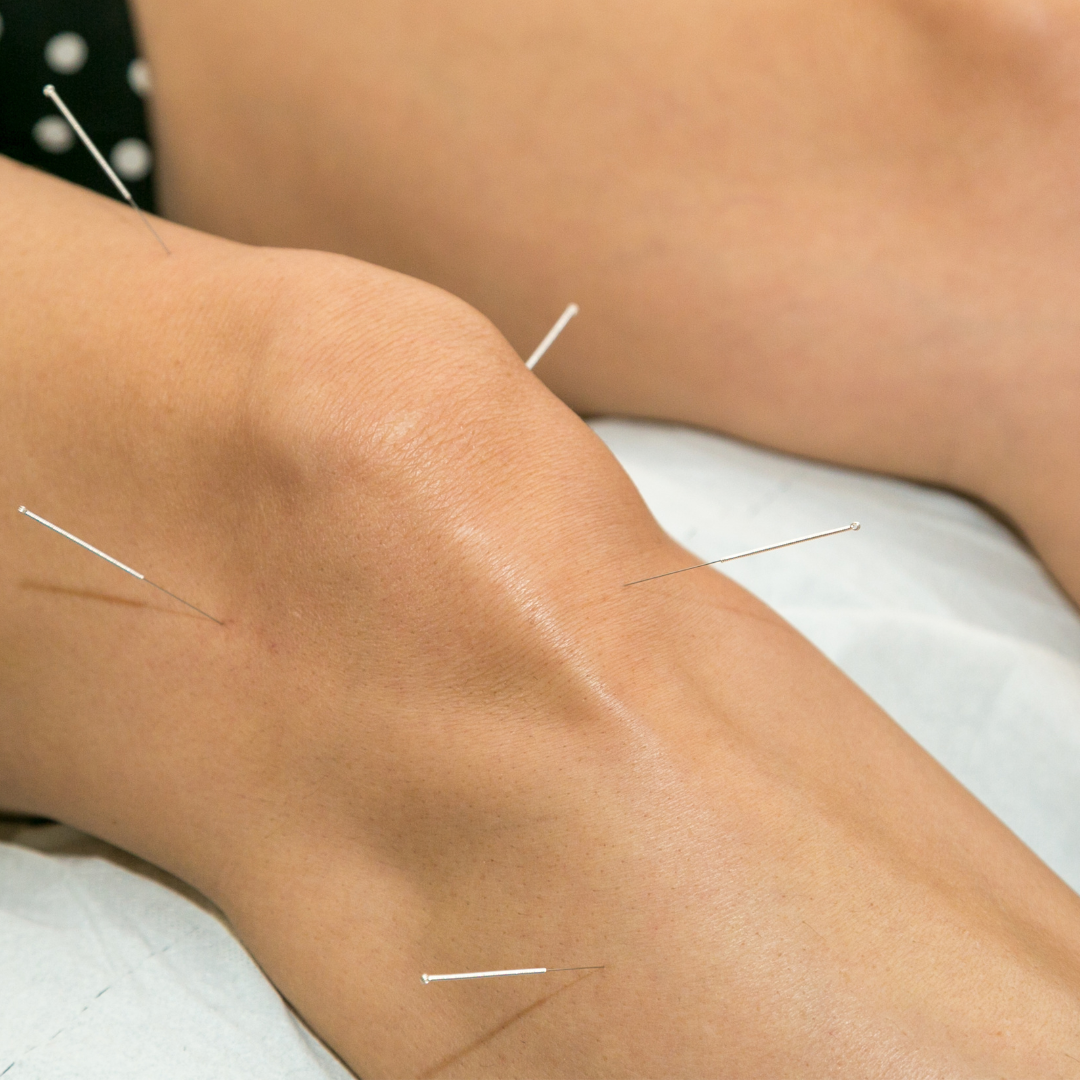
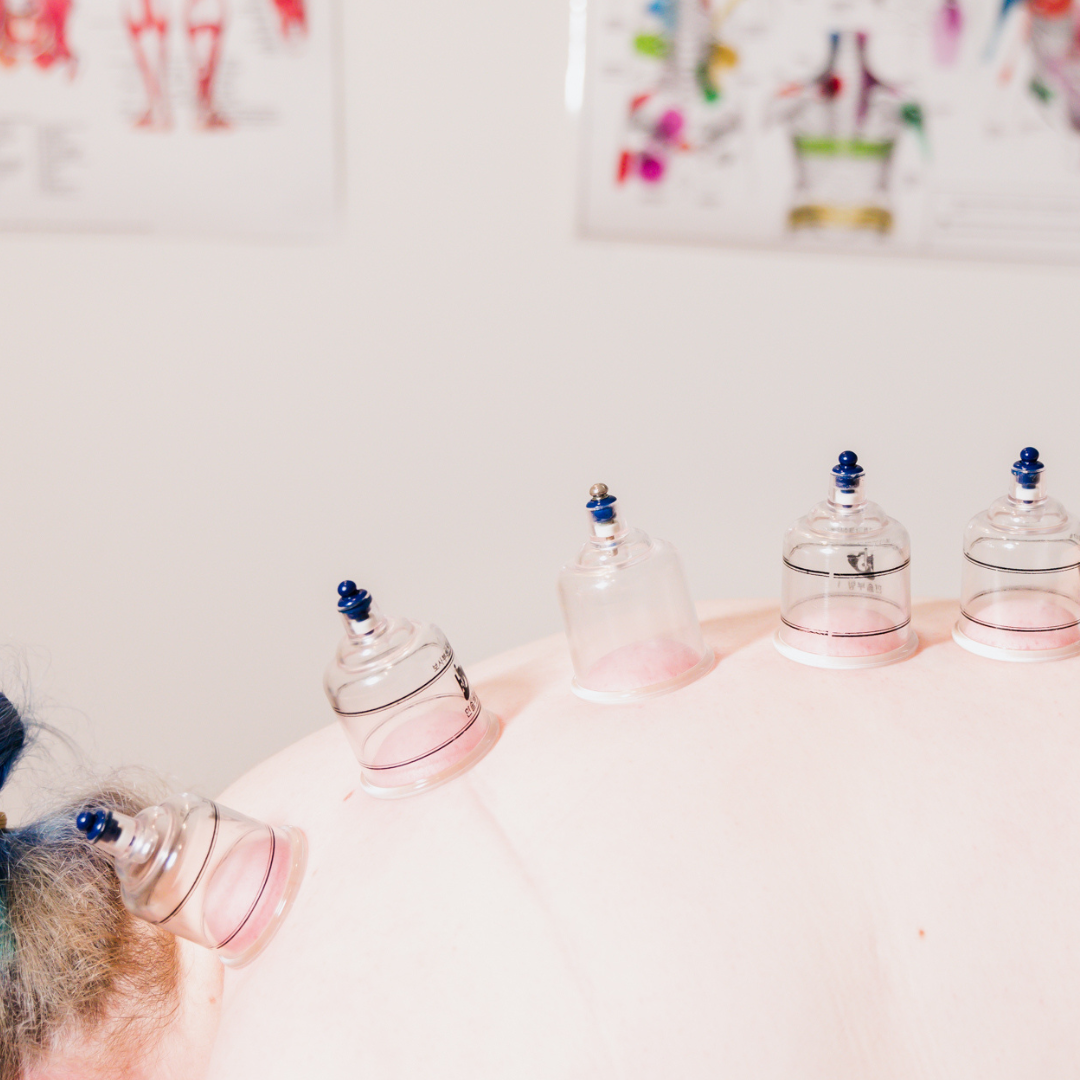
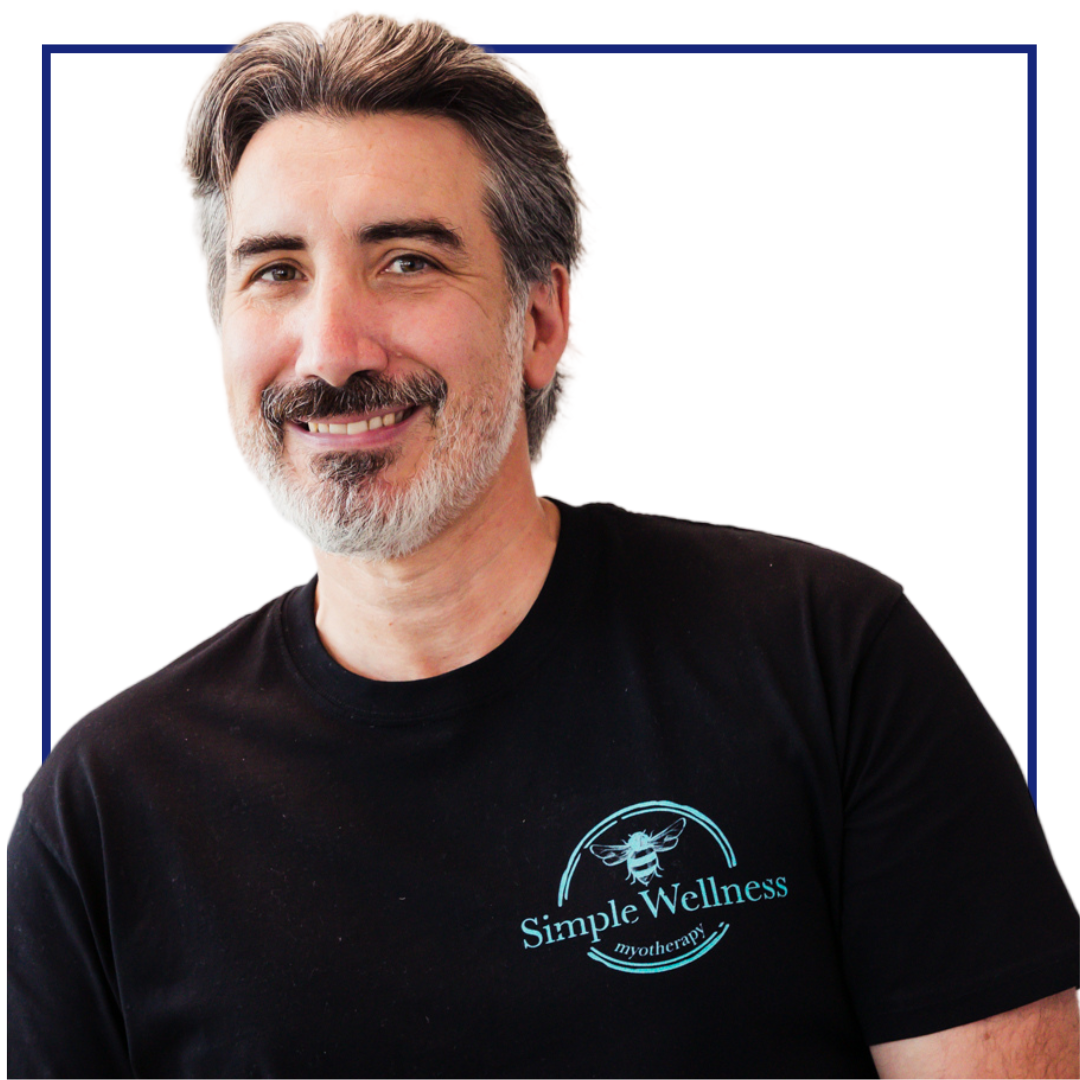

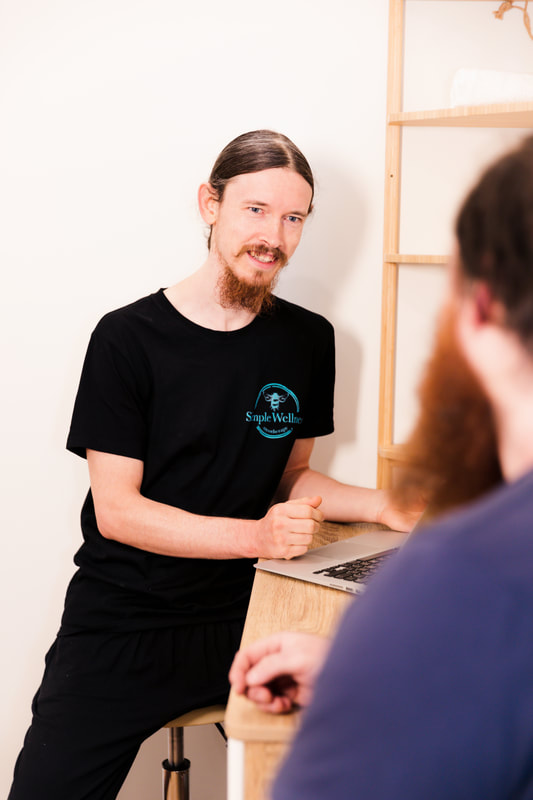
 RSS Feed
RSS Feed